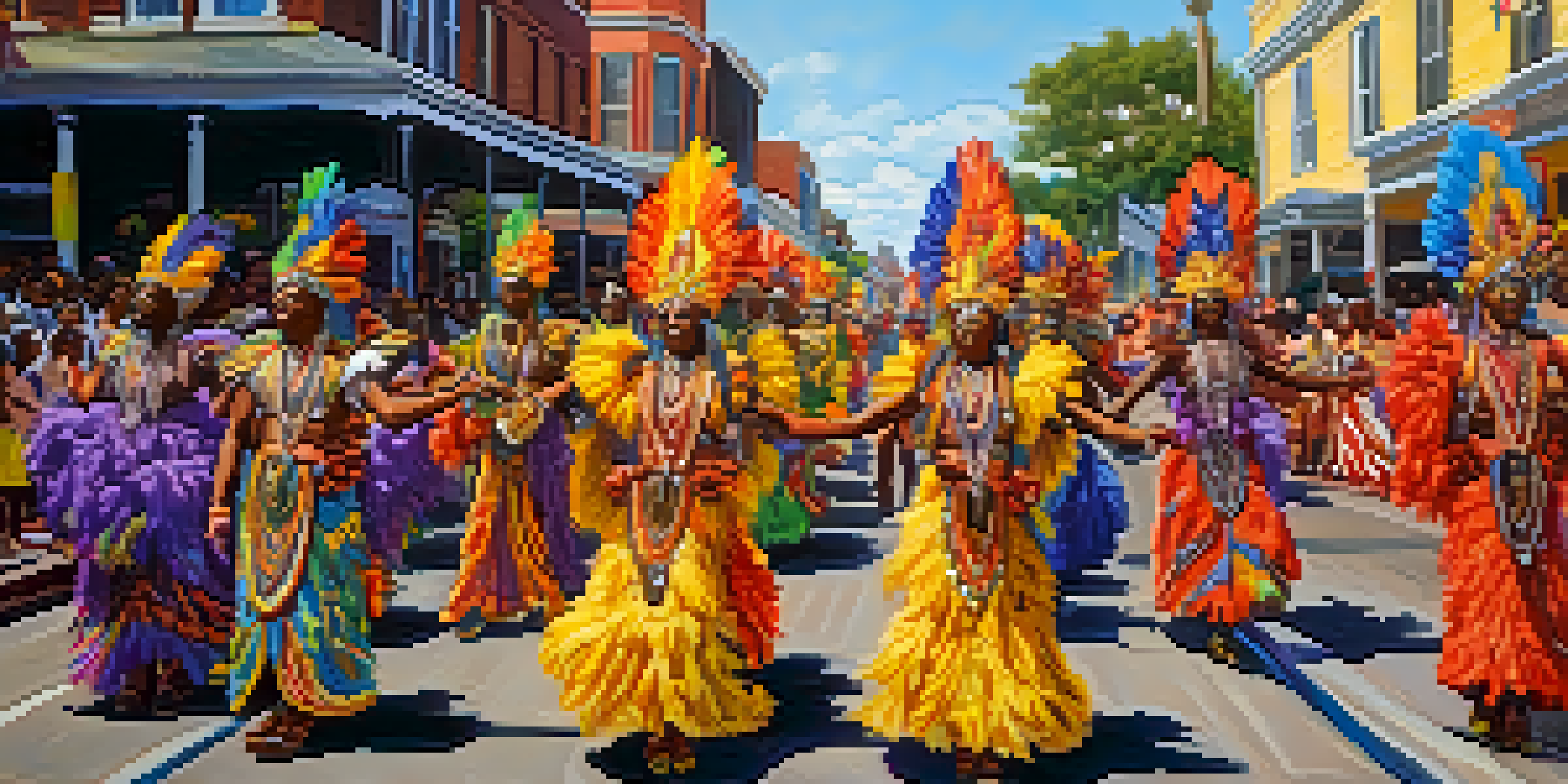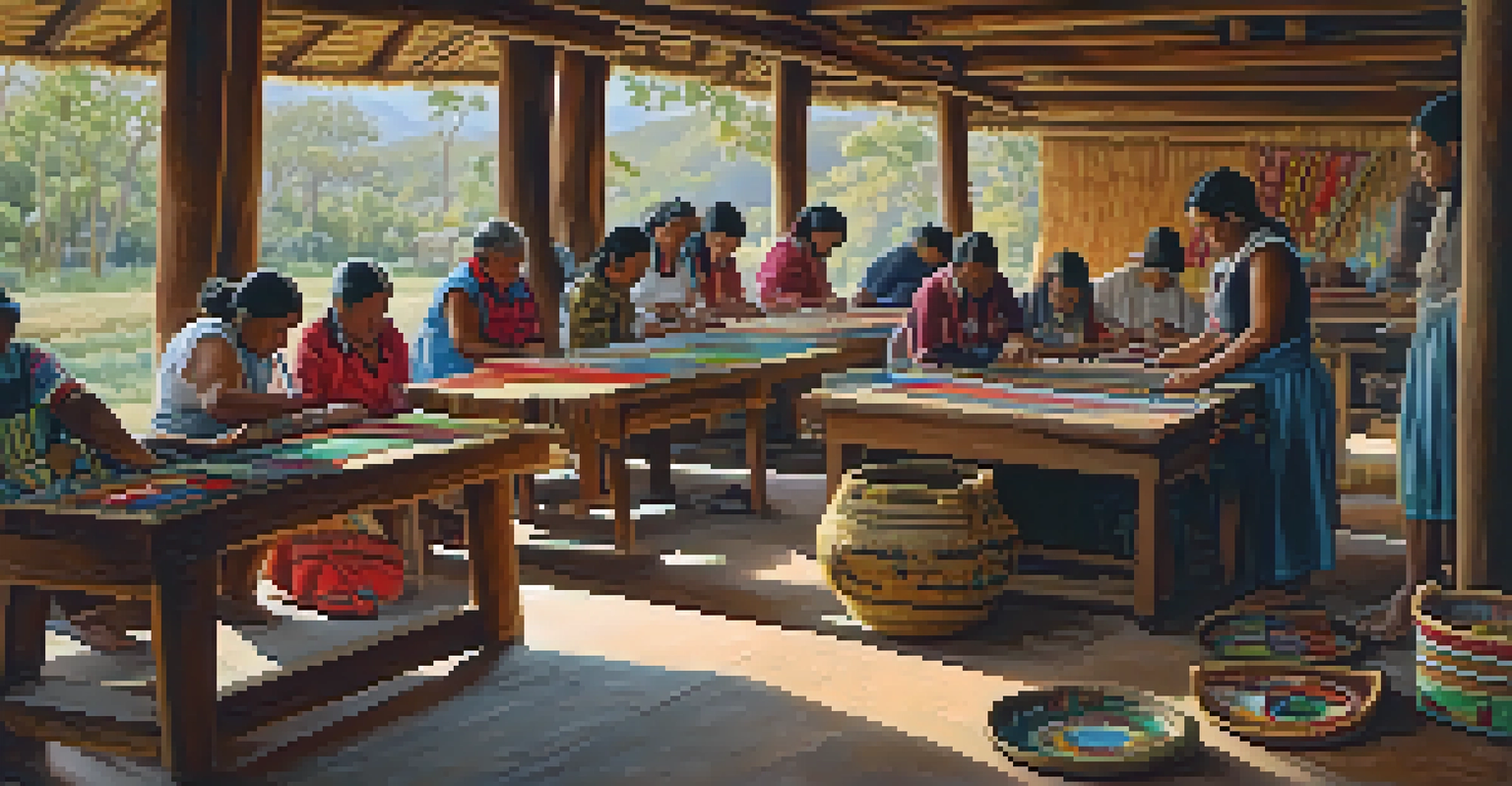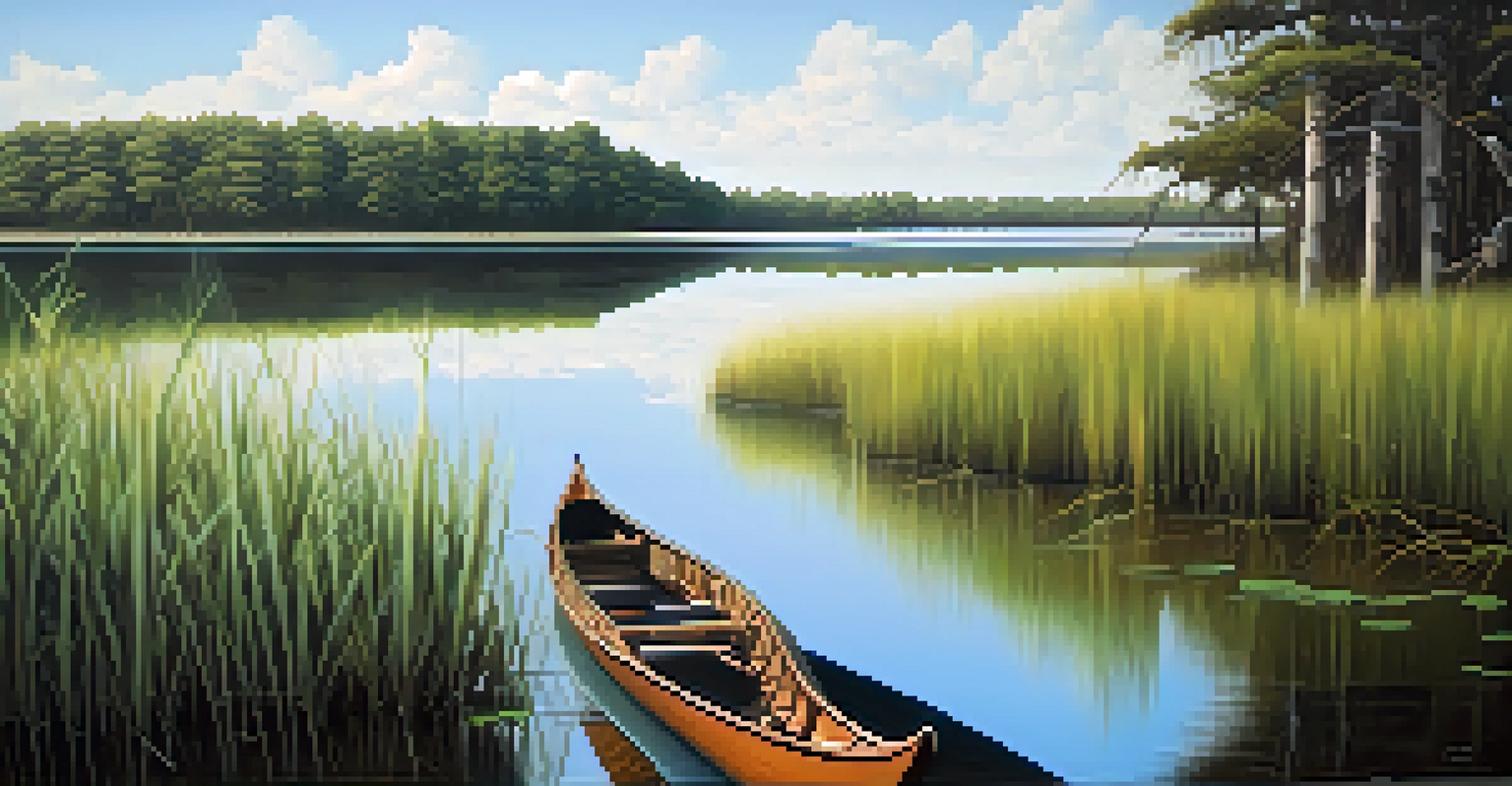Preserving Indigenous Cultures in New Orleans Today

The Rich Tapestry of Indigenous Cultures in New Orleans
New Orleans is a city that thrives on its rich cultural heritage, and Indigenous cultures play a crucial role in this vibrant tapestry. From the Choctaw and Chitimacha to the Houma and Tunica-Biloxi, each group contributes unique traditions and histories to the area's identity. Their influence can be seen in local music, food, and festivals, creating a diverse cultural landscape that draws locals and tourists alike. Understanding this heritage is vital for appreciating the city's full narrative.
The preservation of our heritage is not just a gift to ourselves, but a legacy for future generations.
These Indigenous communities have faced numerous challenges over the centuries, including colonization and cultural erasure. However, their resilience shines through as they work to keep their traditions alive. By sharing their stories and practices, they educate others about their histories and contemporary experiences. This ongoing engagement fosters a deeper appreciation for Indigenous cultures, encouraging a dialogue that honors their past while looking toward the future.
In a city known for its celebrations, the contributions of Indigenous peoples often go unrecognized. But by highlighting their presence and significance, we can begin to weave their narratives back into the cultural fabric of New Orleans. This acknowledgment not only enriches the city’s story but also empowers Indigenous communities to reclaim their voices and heritage.
Cultural Events that Celebrate Indigenous Heritage
Festivals and cultural events are essential for celebrating Indigenous heritage in New Orleans. Events like the annual Mardi Gras Indian Super Sunday showcase the vibrant traditions of the Mardi Gras Indians, who wear elaborate costumes and perform traditional songs and dances. These gatherings not only draw attention to Indigenous artistry but also provide a platform for community solidarity and pride. They serve as an opportunity for attendees to learn about the cultural significance behind the celebrations.

Another significant event is the Pow Wow, which invites people from various Indigenous communities to come together. By participating in traditional dances and sharing stories, attendees foster a sense of unity and respect among diverse cultures. This communal spirit encourages visitors to engage with Indigenous traditions in a meaningful way, breaking down barriers and misconceptions. It's a beautiful reminder of how culture can unite people from different backgrounds.
Indigenous Cultures Enrich New Orleans
The diverse Indigenous communities contribute significantly to the cultural heritage of New Orleans through traditions in music, food, and festivals.
Moreover, local organizations are increasingly focusing on Indigenous education through workshops and performances. These initiatives allow community members to engage hands-on with cultural practices, such as traditional cooking or crafting. By actively participating, individuals gain a richer understanding of Indigenous lifestyles and values, helping to ensure that these traditions are passed down through generations.
The Role of Education in Cultural Preservation
Education plays a pivotal role in preserving Indigenous cultures in New Orleans. Schools and community programs are beginning to incorporate Indigenous history and perspectives into their curricula, providing students with a more comprehensive understanding of the region's past. By learning about the contributions of Indigenous peoples, students can develop an appreciation for their cultural heritage and its ongoing impact on society. This knowledge helps foster respect and empathy.
Art is the most beautiful of all lies; it allows us to express our truth without boundaries.
Additionally, local Indigenous leaders and activists are stepping up to share their knowledge with the broader community. Through workshops and public talks, they educate others about their cultures, histories, and current issues. This grassroots effort not only empowers Indigenous voices but also encourages dialogue around cultural preservation. It's a powerful way to bridge gaps between communities and promote understanding.
As more educational initiatives emerge, there’s a growing recognition of the importance of Indigenous knowledge systems. Programs that teach traditional ecological practices and storytelling enrich the understanding of sustainability and connection to the land. These teachings not only benefit Indigenous communities but also offer valuable insights for everyone in New Orleans, emphasizing the significance of living in harmony with nature.
Art as a Form of Cultural Expression and Preservation
Art serves as a vital means of cultural expression for Indigenous communities in New Orleans. From beadwork and basket weaving to music and dance, artistic practices carry deep cultural significance and tell stories of heritage and identity. These art forms not only preserve traditions but also adapt to contemporary contexts, allowing Indigenous artists to communicate their experiences in today's world. Through their work, they create a dialogue that honors the past while addressing current issues.
Many Indigenous artists are gaining recognition in local galleries and festivals, showcasing their talent and perspectives. This visibility is essential for raising awareness about Indigenous cultures and their ongoing contributions to the arts scene. By celebrating their work, the community can challenge stereotypes and foster a deeper appreciation for the complexity of Indigenous identities. It's a celebration of creativity that resonates with both Indigenous and non-Indigenous audiences.
Education Vital for Cultural Preservation
Incorporating Indigenous history and perspectives into educational programs fosters respect and understanding among students and the broader community.
Moreover, art workshops and community projects provide opportunities for collaboration and cultural exchange. When people come together to create, they build bridges and foster understanding. These interactions help to break down barriers, allowing for a richer appreciation of the diverse voices within New Orleans. Ultimately, art becomes a powerful tool for cultural preservation, reminding us of the beauty and resilience of Indigenous traditions.
Challenges Faced by Indigenous Communities Today
Despite the vibrant efforts to preserve Indigenous cultures, communities in New Orleans face significant challenges. Issues such as land loss, economic instability, and systemic discrimination remain prevalent. These factors can hinder access to resources necessary for cultural preservation and community development. It's a sobering reminder that, while there is progress, there is still much work to be done to support Indigenous peoples.
Additionally, the effects of climate change pose a unique threat to the cultural practices tied to the land and waterways. Rising sea levels and changing weather patterns can disrupt traditional ways of life, making it increasingly difficult for communities to maintain their cultural heritage. As Indigenous peoples often have a profound connection to the land, these changes can lead to a sense of loss that impacts not only cultural practices but also community identity.
Addressing these challenges requires collaboration between Indigenous communities, local governments, and organizations. By working together, they can create sustainable solutions that honor and protect Indigenous cultures. This collective effort is essential for ensuring that future generations can continue to celebrate and practice their traditions, weaving their stories into the broader narrative of New Orleans.
The Importance of Allyship in Cultural Preservation
Allyship plays a crucial role in the preservation of Indigenous cultures in New Orleans. Non-Indigenous individuals and organizations can help amplify Indigenous voices and support their initiatives. By actively listening to and learning from Indigenous leaders, allies can become advocates for cultural preservation and social justice. This partnership fosters a more inclusive environment where Indigenous peoples feel valued and respected.
Moreover, allies can assist in creating spaces for Indigenous communities to share their stories and traditions. Whether through funding for cultural events or providing platforms for artistic expression, these actions demonstrate a commitment to recognizing and honoring Indigenous heritage. It’s about standing in solidarity and ensuring that Indigenous narratives are woven into the broader community fabric.
Allyship Supports Indigenous Voices
Non-Indigenous allies play a crucial role in amplifying Indigenous voices and ensuring their cultural narratives are recognized and respected.
However, it's important for allies to approach this role with humility and respect. True allyship involves recognizing one's own privilege and understanding the complexities of Indigenous experiences. By educating themselves and being open to feedback, allies can contribute positively to the preservation of Indigenous cultures without overshadowing the voices they aim to support.
Looking to the Future of Indigenous Cultures in New Orleans
As we look to the future, the preservation of Indigenous cultures in New Orleans remains a vital endeavor. The ongoing efforts of Indigenous communities, alongside supportive allies, can create a vibrant cultural landscape that honors the past while embracing the future. By fostering educational initiatives, celebrating artistic expression, and advocating for social justice, we can ensure that Indigenous voices continue to thrive.
Moreover, the interconnectedness of cultures in New Orleans offers a unique opportunity for collaboration and growth. By embracing diversity and encouraging cultural exchange, the city can become a model for inclusivity. This approach not only benefits Indigenous peoples but enriches the entire community, creating a shared space where all cultures can flourish.

Ultimately, the journey of preserving Indigenous cultures is not just about safeguarding traditions; it’s about recognizing the value of diverse narratives that shape our collective identity. As we move forward, let’s commit to honoring these cultures, understanding their significance, and ensuring that they remain vibrant and integral to the story of New Orleans.